Route 20 Chess Club
Freeport, Illinois, June 1, 2010
1.d4 d5 2.c4 e6 3.Nc3 Nf6 4.Nf3 h6
A nonstandard move; I guess Gary is trying to prevent 5.Bg5.
5.e3 Bb4 6.Qc2
Fritz wants me to play 6.Qa4+.
6...Ne4
This is a nuisance. I consider 7.Bd2, to break the pin, but decide instead to challenge the knight and prepare to castle.
7.Bd3 Nxc3 8.bxc3 dxc4 9.Bxc4 Bd6
Now I'm thinking about how to develop my other bishop. Based on the shape of my pawn structure and the fact that the e-pawn is blocking it in, I'd like to put it on a3 . . .
10.a4 a5 11.Ba3 0-0 12.Bxd6
Trading off my bad bishop for Gary's good one and putting me nicely ahead in development.
12...cxd6 13.0-0 Nd7
My pawn structure points toward queenside play . . . hey, b5 looks like a perfect knight outpost! It's slow getting there, but I think I've got time.
14.Nd2 Nf6 15.f3
Stay back, horsey.
15...b6 16.Nb1 Ba6
17.Na3
I like this move because it's the one I wanted to play anyway, and it also defends my bishop. But Fritz urges 17.Bxa6 Rxa6 18.c4 because of the threat of 17...Bxc4 18.Nxc4 Rc8 followed by 19...Nd5, piling on my backward pawn.
17...Qc7 18.Bxa6 Rxa6 19.Nb5 Qc6
Now I spend a lot of time trying to figure out which rook to put where. I wish I knew some kind of rule of thumb. Finally, I decide that some reinforcement is needed behind my c-pawn.
20.Rfc1 Nd5
Well, that's a pain. This move attacks both my backward pawns. Can I defend both of them? Yes.
21.Qd3 Rc8?
Fritz points out that this move allows 22.Nxd6!? Rca8 (22...Qxd6 23.Qxa6) 23.Nb5.
22.e4 Nf4 23.Qd2 e5 24.d5 Qc4
With the threat of 25...Ne2+ 26.Kh1 (26.Qxe2 Qxe2) Nxc1 27.Qxc1. Better head that off immediately.
25.Rc2 Qd3?
Unpleasant choice: 26...Rxc3 27.Rxc3 Qxd2 or 26...Rxc3 27.Qxc3 Qxc3 28.Rxc3 Ne2+. OK, that queen's got to go. And a beautiful bonus: After he retakes with the knight, I can knock out his backward d-pawn with initiative on his rook (which is why Fritz strongly prefers 25...Rd8).
26.Qxd3 Nxd3 27.Nxd6 Nb4??
Gary has one rook on a half-open file and another trapped in a cage. Also, I have way more space and an extra pawn. Oh, yeah -- I'm happy to trade.
28.Nxc8 Nxc2 29.Rb1
I miss a magnificent opportunity to sprint: 29.d6! Nxa1 30.d7 Ra8 31.d8Q+.
29...Ra8
You want to give me another pawn? OK.
30.Nxb6 Rb8
A pin. How do I get out of this with equality? First, I need to put the rook somewhere it's not hanging. At first, I consider the basic 31.Rb2 (which is in fact the best move), but then I get what I think is a cleverer idea. (It's not.)
31.Rb5 Na3 32.Nd7
I should send my rook back to b2 and let Gary trade away a rook for a knight if he wants to. I still have a decisive advantage after 32.Nd7, but much less of one.
32...Rxb5 33.axb5 Nxb5 34.c4
A psychologically amusing moment, as I suddenly "realize" that 34.c4 is a big mistake: 34...a4 35.b6 a3 36.Na4 a2 and 37...a1Q, which I can't stop, and I hope against hope that Gary doesn't see it.
Except that Gary does see . . . that he can't promote the pawn! The sequence he notices, which I'm missing, is 34...a4 35.Nc5 a3 36.Nb3.
34...Nd4?
Bad only because if 34...Nc3, his a-pawn can make a dash for the door, and while I can still stop it, I do so at the cost of my knight (35.Nxe5 -- hey, why not? -- a4 36.Nc6 a3 37.Nb4 a2 38.Nxa2 Nxa2).
35.Nb6
Thinking I've just had a narrow escape, I rush to blockade the little punk before it makes its break. I miss 35.Nxe5, which is a gimme.
35...f6 36.Na4 Kf7
Now that the "threat" of the passed a-pawn is put to rest, I feel good about this endgame. I'm going to get one of those two connected pawns to the finish line.
37.c5 Ke7
Gary's king can't get anywhere near those pawns, but I'm not going to be able to advance them any further unless I can do something about his knight.
38.Kf2 g6 39.g3 f5 40.f4 exf4 41.gxf4 (41.e5!) fxe4 42.Ke3 Nf3 43.Kxe4 (better is 43.h3 first) Nxh2
44.Ke5 (44.c6!! Kd6 45.Nc3 Ng4 46.Nb5+ Ke7 47.d6+ Ke6 48.c7 Kd7 49.Na7 is devastating) Nf3+
I have a brief moment of checkmate panic before I spot the escape square.
45.Ke4 Nd2+ 46.Kd3 Nb3 47.c6 Kd6 48.Kc4 Nd2+ 49.Kb5 h5
I count moves. Gary needs four free moves to promote his pawn. I need only one king move and two pawn moves.
50.Kb6
Adequate, but 50.Nc5 is a sure thing.
50...Nc4+ 51.Kb7 Kxd5
This concerns me, because now Gary can move Nd6 and take away my promotion square. Can I stop this from happening? Actually, I can, because as it happens, the placement of his pieces gives me a lovely fork.
52.Nb6+ Nxb6 53.Kxb6 h4 54.c7 h3 55.c8Q h2 56. Qh8 1-0

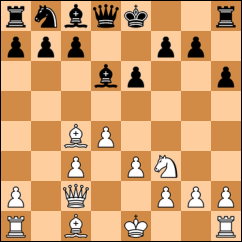
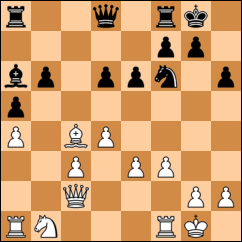
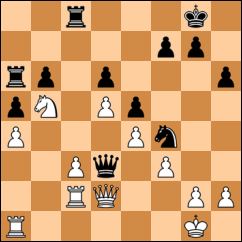
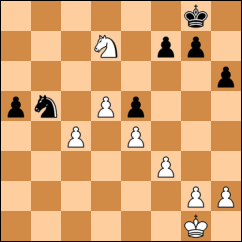
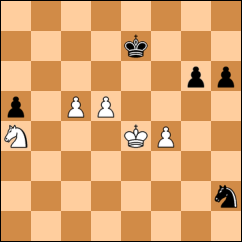
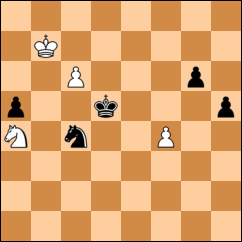



0 comments:
Post a Comment